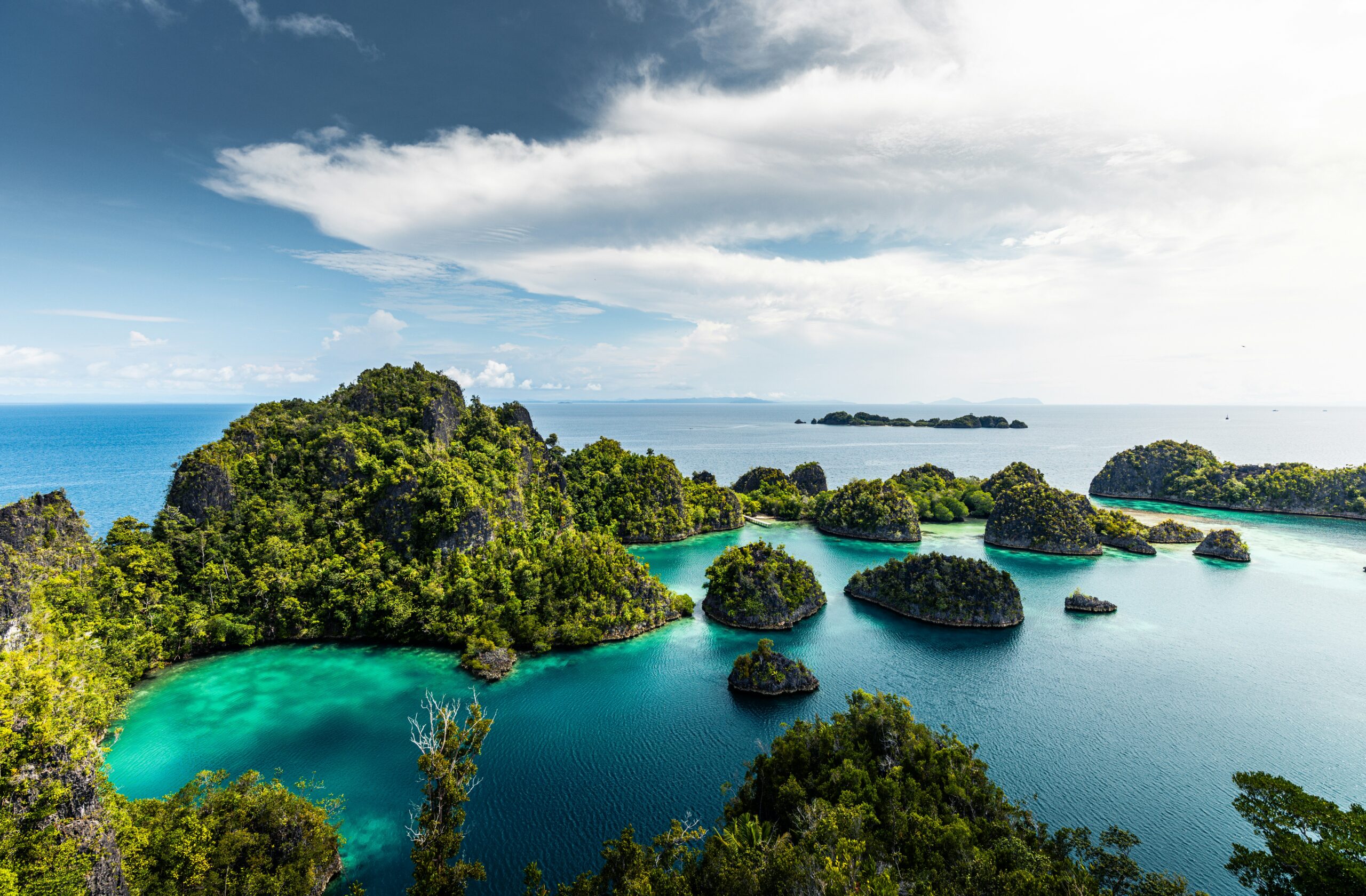Photo by Simon Spring
UNESCO designated Raja Ampat as a biosphere reserve on 27 September 2025, making the Indonesian archipelago one of the few places on Earth with dual UNESCO recognition for both geological heritage and biodiversity. The designation comes as a new report reveals that nickel mining concessions covering 22,000 hectares overlap with coral reefs and marine habitats in the region.
The biosphere reserve designation was among 26 new sites recognised by UNESCO across 21 countries—the highest number in 20 years. Raja Ampat previously received UNESCO Global Geopark status in 2023, with the dual recognition highlighting both its 400-million-year-old rock formations and extraordinary marine biodiversity.
Biodiversity significance
The Raja Ampat Biosphere Reserve spans 13.5 million hectares across approximately 610 islands, of which only 34 are inhabited. Located at the heart of the Coral Triangle, the archipelago hosts 75% of the world’s coral species, more than 1,300 reef fish species, and five species of rare or endangered turtles including the hawksbill turtle.
UNESCO described the region as a “living laboratory” of conservation, noting that it “exemplifies how conservation, science, local knowledge, and sustainable development can coexist for the well-being of communities and the preservation of the environment.”
Approximately 60% of Raja Ampat’s reefs remain in good to excellent condition, despite past damage from destructive fishing practices.
Mining concessions and environmental concerns
A report by Indonesian NGO Auriga Nusantara and U.S.-based Earth Insight found that nickel concessions in Raja Ampat cover 22,000 hectares, including zones that overlap with coral reefs and marine habitats. The organisations state that operations by several companies, including PT Gag Nikel (part-owned by state mining firm Antam), have already affected forest cover and coral reefs.
The report warns that continued extraction could put at risk 2,470 hectares of reefs and endangered species habitat, along with 7,200 hectares of forests. More than 64,000 people rely on Raja Ampat’s ecosystems for their livelihoods.
“The UNESCO biosphere reserve designation is further proof of how important Raja Ampat is for biodiversity, both on land and at sea. The Indonesian government must urgently commit to permanently protecting Raja Ampat and revoke all nickel mining permits that continue to threaten its future,” said Arie Rompas, head of the forest campaign at Greenpeace Indonesia.
UNESCO awareness of mining pressures
UNESCO has not publicly commented on the mining threat. However, an August 2025 document from the agency’s advisory committee acknowledged that the proposed biosphere reserve area is rich in nickel and has potential for oil and natural gas development. The committee requested detailed information on concession locations, environmental impacts, and assessments from the Indonesian government before approving the nomination.
Global context and effectiveness questions
The designation occurs amid growing global demand for nickel in electric vehicle batteries and renewable energy storage. A recent Nature study of 119 UNESCO biosphere reserves worldwide found that only 15% performed better across ecosystem functions like water regulation and connectivity compared with surrounding areas, raising questions about whether international recognition alone can provide effective protection.
“Hopefully with the designation as biosphere reserve, the destruction of Raja Ampat could stop and shift to conservation that also empowers communities,” said Timer Manurung, executive director of Auriga Nusantara.
Management framework
To implement the designation, UNESCO has indicated that a five-year management plan has been drafted for 2025-29. A new institution—the Raja Ampat Islands Biosphere Reserve Management Coordination and Communication Forum—will bring together local governments, Indigenous representatives, and other stakeholders to coordinate programmes.
Maman Turjaman, chair of Indonesia’s UNESCO Man and the Biosphere programme committee, stated in 2024: “The success of managing Raja Ampat as a Biosphere Reserve depends on the synergy among all parties involved.” He added that Indigenous knowledge would remain central, supported by local governments.
Conservation versus extraction
The tension between conservation designation and economic development through mining reflects broader challenges in balancing biodiversity protection with resource extraction driven by global demand for clean energy technologies.
“No nickel is worth the destruction of the Raja Ampat ecosystem, which is often referred to as the last paradise on Earth,” Rompas said.
The situation in Raja Ampat presents a test case for whether international conservation designations can effectively safeguard biodiversity against extractive pressures in regions where both ecological significance and mineral resources coincide.
